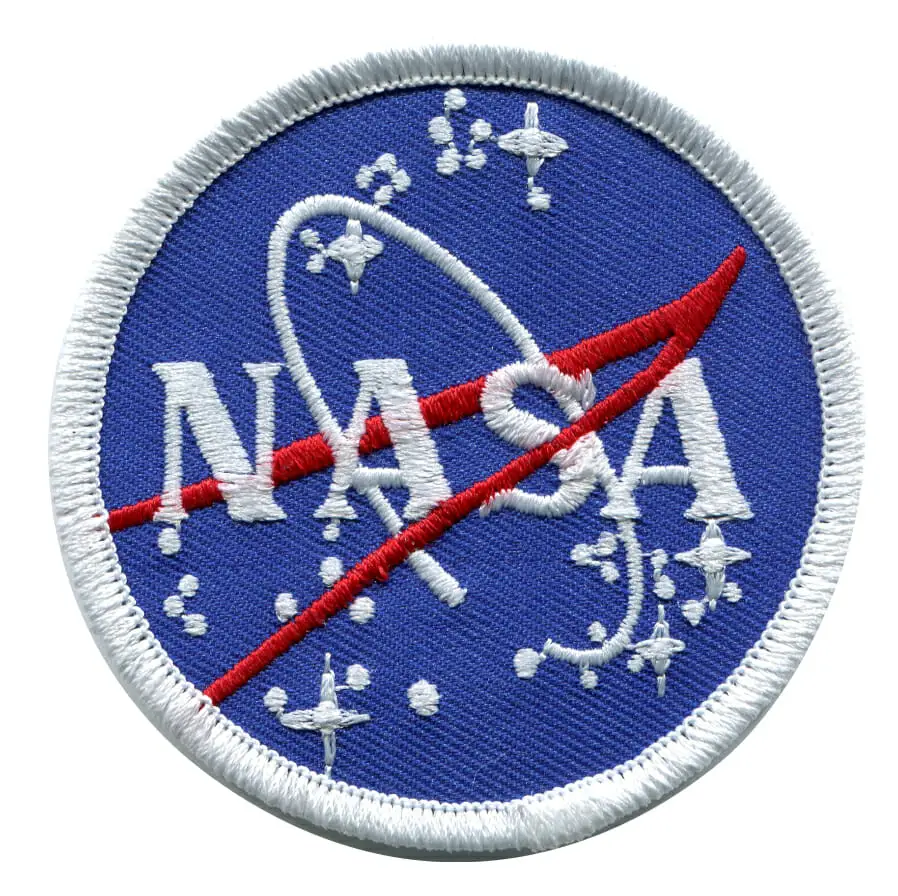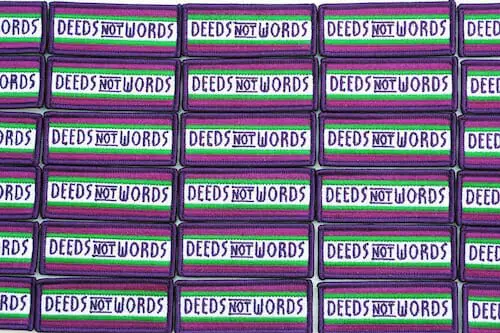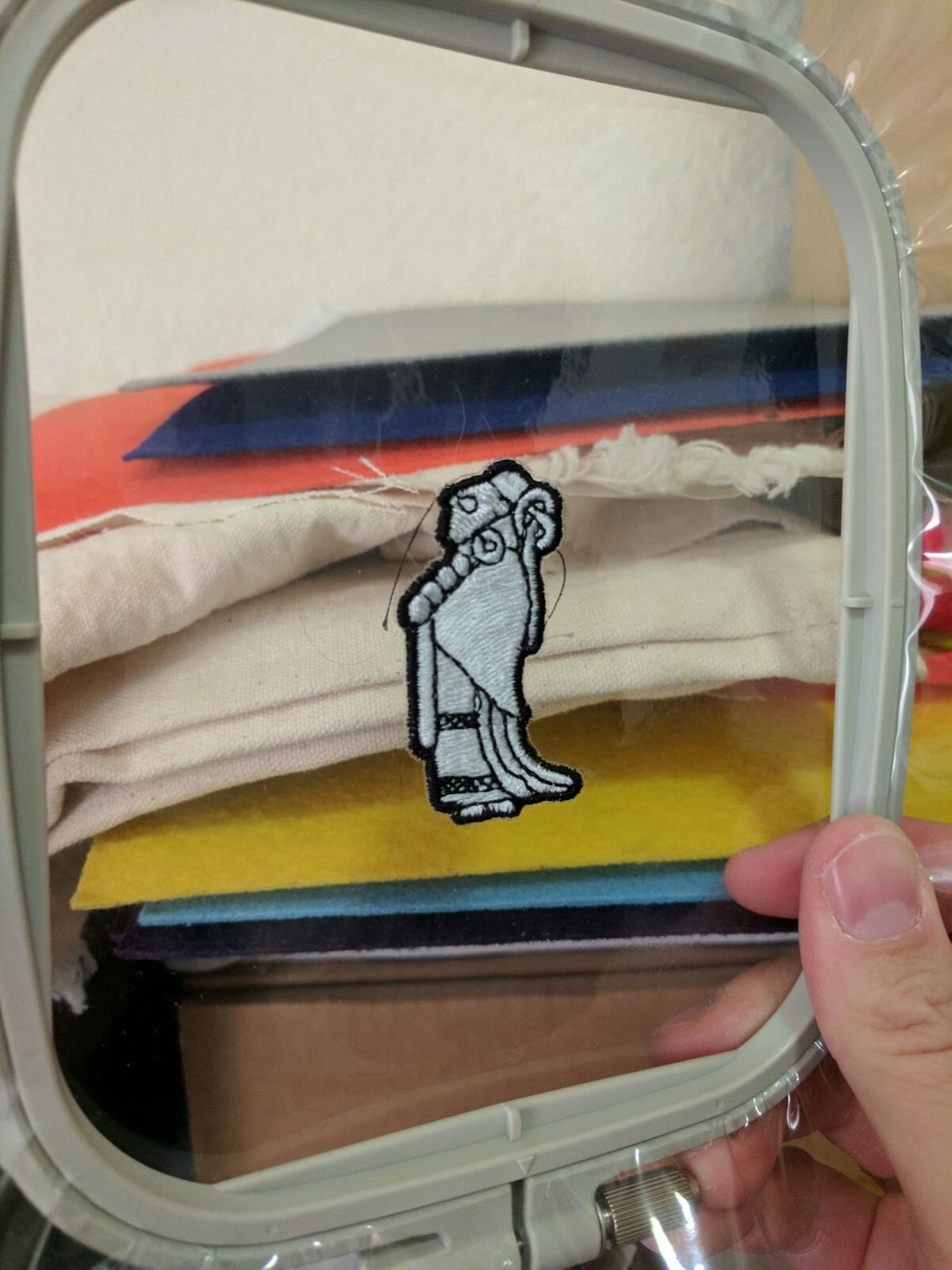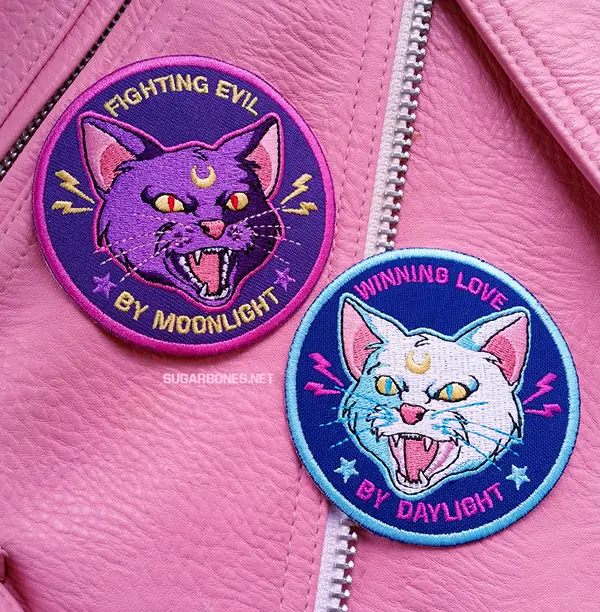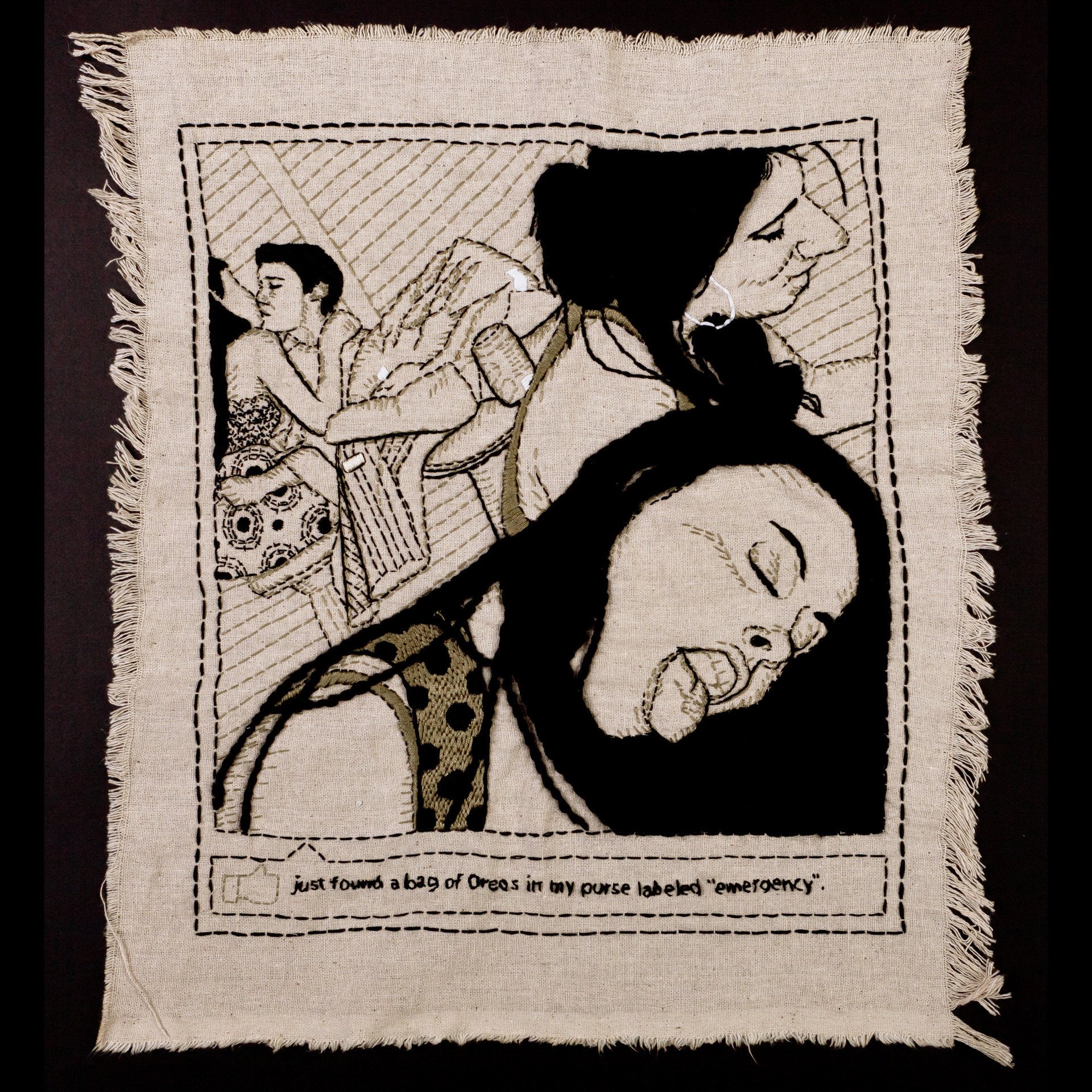
Our digitizing guru, Erich Campbell, wrote an article about NASA Mission Patches for the Space issue of XStitch Magazine and we thought you’d enjoy finding out about a familiar object you might not truly appreciate!
If there’s one piece of ephemera that most completely represents space travel, particularly to those of us who were raised on the work of NASA, inundated with pictures and videos of the brave souls who broke free of Earth’s grip for the sake of science, it has to be the mission patches.
As forward-looking as the world of aerospace may be, it comes as no surprise to this machine embroiderer that these stitched emblems are produced in a way that is itself historical and rooted in the origins of machine embroidery as an industry.
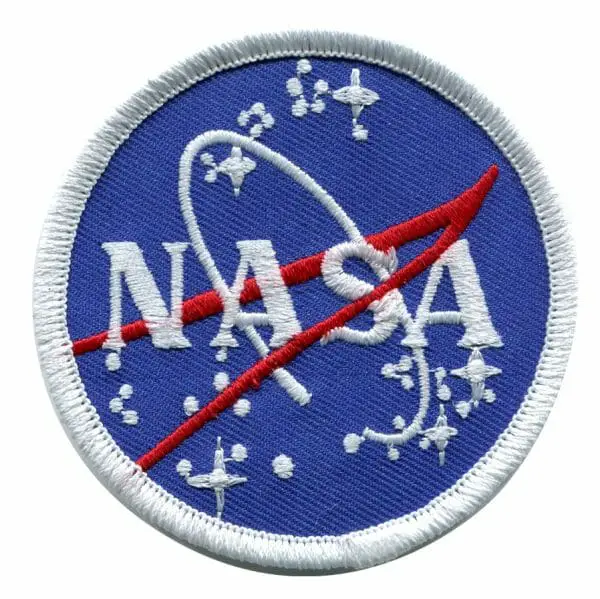
Being an embroidery digitizer myself, I have often confronted the odd juxtaposition of modern software, design, and machinery producing such a classic art, based on the interlock stitch that hasn’t changed much in over 100 years. Thus, when I started researching the origins of NASA’s embroidered treasures, I was pleasantly rewarded with a look into a company whose origins hail back nearly to the beginning of mechanized embroidery itself.
A-B Emblem has been producing patches for NASA and since the early 1960’s, but the company itself was one in a long line of embroidery businesses belonging to the Conrad family; stretching all the way back to Kurt Erwin Conrad who started his business 1909 in Plauen, in the German state of Saxony. Though post WWI turmoil saw Kurt’s son Erich Henry leave the industry and then the country in order to find opportunity in the US in 1928, Erich was eventually presented with an opportunity to finance an embroidery machine and moved his family to the state of New Jersey to start the Conrad Embroidery Company. Erich Henry, despite trials, would grow this business, starting A-B Emblem in 1951, leading to further expansions overseas by his son Bernhard, all while A-B Emblem has continued uninterrupted making embroidered emblems in the US to this day, with its operations located since 1963 in Weaverville, North Carolina, a site that went online right as space exploration really began to heat up.
Today, Bernhard’s son Paul Conrad, experienced in the craft both as a designer and digitizer, serves as co CEO of A-B Emblem with his brother-in-law Andrew Nagle, and it’s Paul who was so gracious as to grant me an interview about how such an historic company came to create the patches for NASA and how they continue to serve space agencies worldwide as well the newly minted commercial space-travel players like SpaceX and Virgin Galactic.
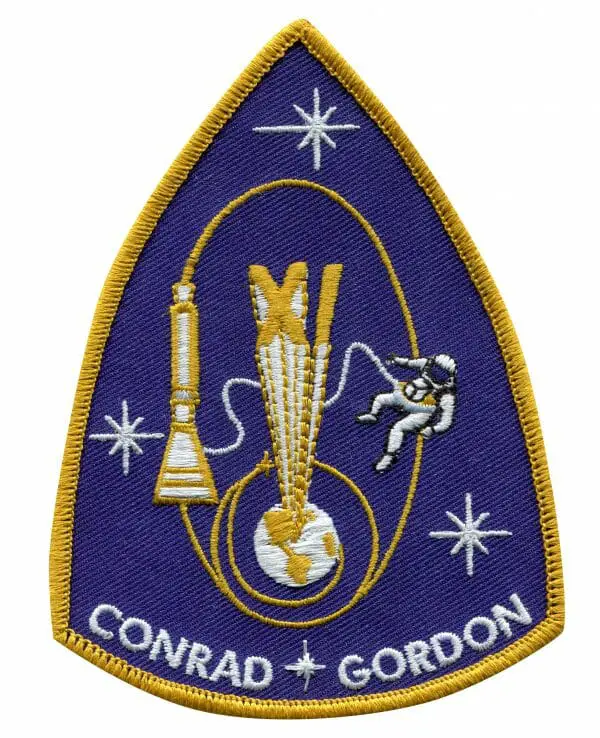
EC: How did A-B Emblem become the official contractor for NASA mission patches?
PC: In 1961 we were making a lot of ski resort emblems and had an ad campaign with Time-Life Publications. The Time-Life Account Manager was visiting the factory in Union City, NJ and he saw the NASA meatball running on one of the schiffli [embroidery] machines. At the time, my father and grandfather, as well as a lot of Americans, didn’t know the name NASA very well. The Time Life guy got excited and asked if he could have one. Three emblems were cut out of the span, finished, and given to him. Through his connections with the astronaut’s office he got those three framed and signed by the Original 7 [astronauts], Scott Carpenter, Gordon Cooper, John Glenn, Gus Grissom, Wally Schirra, Alan Shepard, and Deke Slayton. He kept his, I have one, and the 3rd is in my father’s office. We were awarded the NASA contract after Apollo 11 which we still have to this day. My father and grandfather were both invited to Cape Canaveral for Apollo 15 launch in ‘71 and Apollo 17 launch in ’72. My grandfather was also invited to the Saturn 1B launch in Houston, for the Apollo/Soyuz Project.
As you have created the patches for NASA and other agencies for many years, you must have an interesting insight into how the design sensibilities have changed over time; What is different about today’s emblems compared to those your company first produced?
Raw materials and embroidery machinery. In the early 90’s, polyester thread and twill replaced the rayon thread and 65/35 Cotton Poly twill used previously in patch making. Around the same time, the industry shifted from schiffli machines to multihead table machines. After embroidery, the emblems are finished by hand just as they always have been.
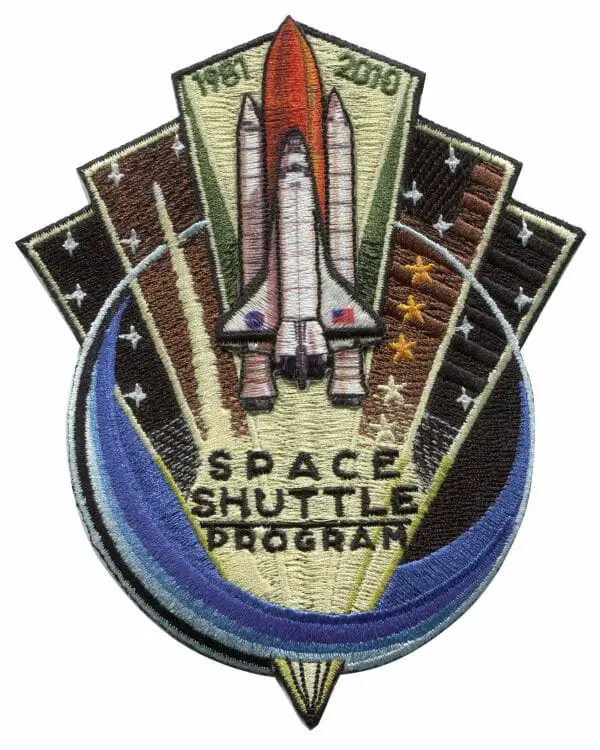
In creating the emblems for not only NASA, but for commercial entrants into the space exploration industry, are there any special considerations you have to take into account?
There is no restriction for the emblems that go on the flight suits. The emblem we make for the MMU, [Manned Manoeuvring Unit], the backpack-like unit used to propel astronauts outside of their vessels, is stitched in Rayon on cotton, with no backing. This particular product is a real challenge, because it’s a 2” rendition of the mission emblem. When they’re first designed, a 2” version is not usually taken into account – at that size lettering and design integrity really get pushed to the limits of what can be done in embroidery. Thanks to the group of talented digitizers I have, we put our heads together and figure out how to make it. That part of the process has always been the most fun for me.
In my experience, emblems for the military and aerospace are often incredibly detailed and difficult in terms of the detail in elements represented, both in terms of representing literal craft and technology as well as the military heraldry. Do you work with the designers at NASA directly in reworking and interpreting the designs for embroidery? How does the design and approval process work?
Usually, we get the art from the Astronaut Office and create the first round of samples. Those are given to the astronauts for critique. Often we get instructions to reposition stars, clean up the solar arrays on the ISS, or use a different colour for an element. We have to pay close attention to the Cyrillic lettering of the cosmonauts. We will also get revisions to the flight crew roster, meaning we will have to substitute an astronaut’s name.
During the Shuttle Program we would occasionally get visits from the Astronauts themselves. As I understand, they are required to maintain a certain amount of flight hours before their missions. Over the years I ferried astronauts from the Asheville airport to the factory 5 or 6 times. For me, Dan Brandenstein, Andy Allen, and Jerry Ross’s separate visits were some of the more memorable we have had.
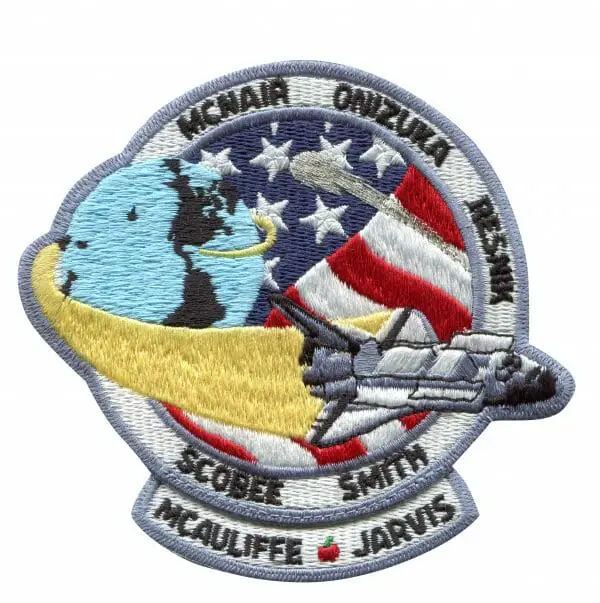
What would you say is the most challenging thing about creating NASA mission patches and emblems for space exploration in general?
The designs almost always tell a story and it’s important for us to understand that story. It could be the mission objective, payload, or collaboration with another space agency. There are also designs that contain Greek mythology. All the missions Jerry Ross was on had a rainbow of some sort included, representing the Christian story of Noah and the rainbow that appeared after the flood. The better we have our heads around it, the better we can help that story be told. As for the most challenging thing, it’s the shear complexity of some of the designs, really no different than any other 4” sized emblem that has a ton of detail and complexities, which is something we deal with every day.
Do you have a favourite emblem or series, or perhaps one of which you are most proud? If so, what makes it your favourite?
I’m proud of the Apollo Program because most of those had my father’s or grandfather’s design and punching in them. [Punching is an older word for what would become embroidery digitizing, referring to the original practice of punching holes into a paper tape or jacquard that encoded stitches for machine embroidery as interpreted by the embroidery designer and digitizer/puncher.] I remember being really young and hanging out in the design department while my Dad and Grandfather sketched parts of the designs freehand with pencil and vellum. If you look at Apollo’s head on Apollo 17 you can see that care and detail. I’m proud of the International Space Station Mission emblems, as I’ve had a hand in the digitizing of most of them. I’m proud of the 17 and 13 inch Presidential Seals we did for Air Force 1 and Marine 1. I’m proud whenever I see a soldier, park ranger, customs agent, airport security screener because they wear a ton of A-B Emblem emblems. My brother-in-law Andrew likes to golf, he might say the Masters emblem we make for the green jacket is his favourite. The nice thing about our business is we are into a lot of markets, so the sheer amount of designs flowing through here is immense. We process 1200 to 2000 custom designs per month.
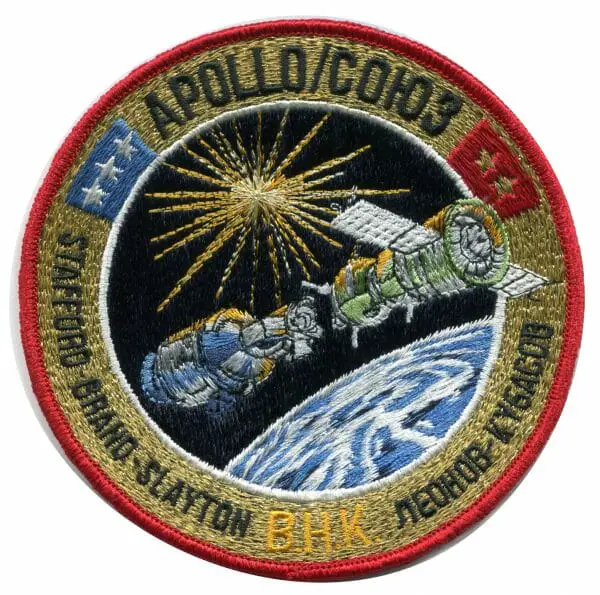
What’s something that you think would surprise people about these emblems or your process in creating them?
I’m always amazed how people are shocked at the amount of work that goes into each emblem. When we give tours, the sense I get is people believe that it’s a much more automated process. That in itself is probably the one thing that bothers me about the markets we serve, where we used to be selling a custom premium, now it’s viewed as a commodity, even though it really is still a custom premium (unless we’re talking about very large orders). People are surprised to hear that we make 65-70 million emblems per year, that we own and operate three different factories in three different countries, and just how long we’ve been around.
What do you see as the future of embroidery and emblems in space exploration?
Well first let me say this, there are so many other types of badges that are not embroidered, we are very aware people have other options and we are happy that embroidery has remained something people want. In regard to space exploration, NASA mission patches are as ubiquitous as the metal logo on a car, so I don’t see that changing. Interesting developments in the use of today’s multi-head machines are being used to sew plastic tubes to cloth panels which would then be pieced together into a suit that has internal liquid cooling. They’re being used to sew heating coils into seat panels for the automotive world. I’ve seen them sewn down carbon fibre flat panels that will be formed after being stitched into three dimensional objects. Patches can have RFID or anticounterfeiting marks sewn in for security applications. How all of these variations upon the embroidery theme could work for future space exploration I don’t know, but we’re game!
Like many things in machine embroidery, there is a strange balance in the creation of these patches; artisans labour over the interpretation of complex images depicting space-age vehicles at the same time as ancient mythological symbols and Latin mottos. They spend hours at computers, not processing images, but placing the coordinates of stitches, sometimes individually, echoing something more akin to hand embroidery than most people would realize. They create this handcrafted design, only to turn over this immaculately-detailed digital program to high-tech machines that marry the mechanical system that creates the stitch itself, a technology that has remained largely unchanged since its inception in the late 1800s, to servo-driven robotic pantographs that accurately move the workplace so that each stitch lands on the substrate in exactly the place the digitizer intended, controlled by on-board computers numerous times more complex than those that enabled human beings to travel to the moon. Machine embroidery bridges a gap between history and future, and like these patches that show the ancient origins of our cultures alongside our furthest stretches beyond our collective horizon, it remains a bridge across ages, at once tied to the ancient history of the stitch and found decorating the highest technology known to humankind, a timeless expression of who we are and who we want to be.
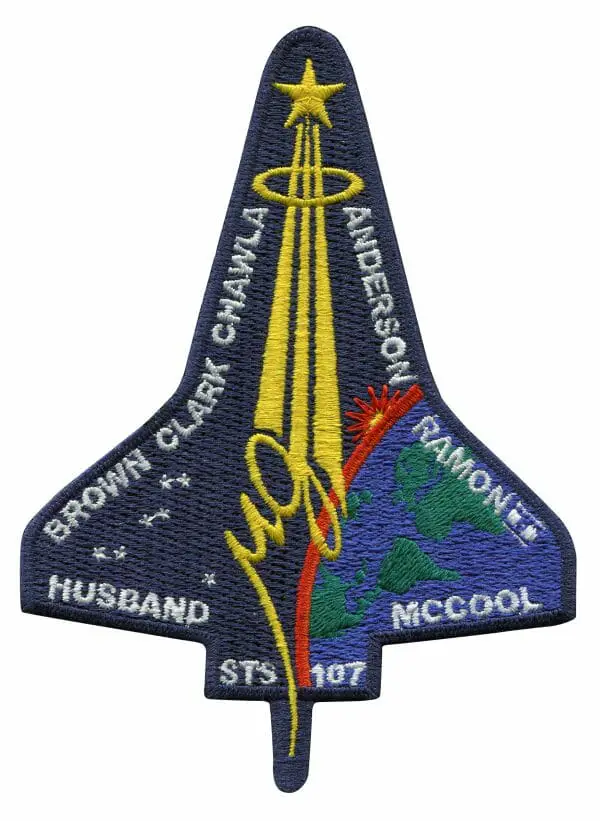
If you want to enjoy more Space inspired embroidery, then get a copy of XStitch Magazine Issue 3! Our Space edition has fifteen stellar cross stitch designs as well as articles, book reviews and more! Get the limited edition print copy, or get our digital edition for instant download!

